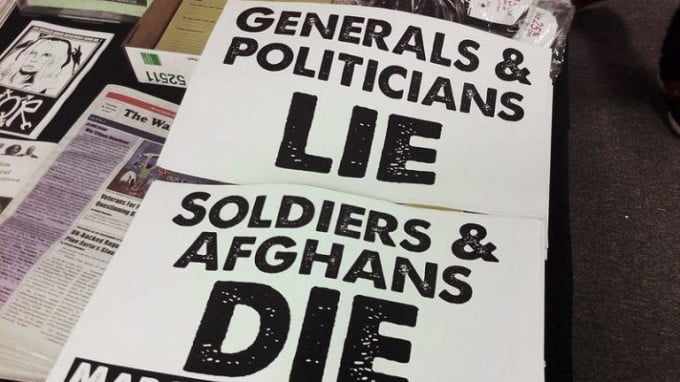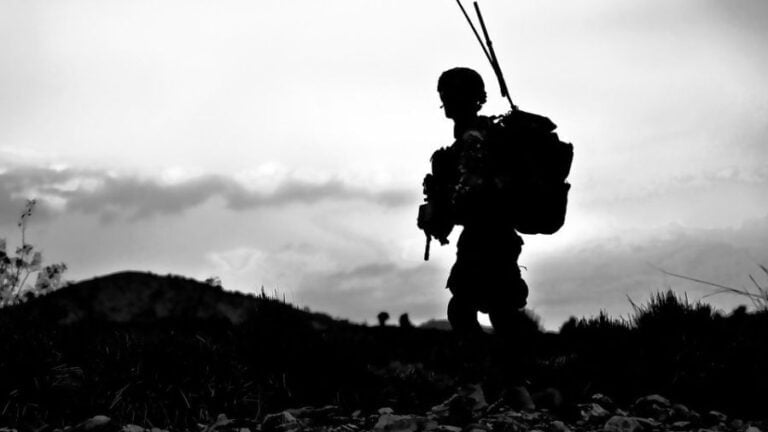Afghanistan: What is to be Done?
The mainstream media is asking the wrong questions regarding the possibility of Russian bounties for American soldiers. Over and over, they ponder what did the president know and when did he know it? These were important questions that Senator Howard Baker asked of President Nixon during Watergate, but they are meaningless questions for Donald Trump, given his ignorance and indifference. Trump has mishandled every foreign policy and national security issue for the past three and a half years; why would anyone expect him to get this one right. The fact that he was making a series of calls to President Vladimir Putin regarding a return to the G-7 even as his National Security Council was discussing the bounty issue and the intelligence community was providing threat warnings to NATO members with troops in Afghanistan is simply too bizarre for words.
But there are relevant issues regarding the current problem of Afghanistan, which the mainstream media should address, and there is the question of what is to be done. The problem with media coverage is once again the lack of context. Therefore, some history regarding the United States, the Soviet Union, and Afghanistan is in order. (And at the risk of blowing my own horn, as a CIA intelligence analyst in 1979, I produced in March the first assessment that anticipated the Soviet use of force in Afghanistan, which took place in December. I couldn’t get it into the President’s Daily Brief or the National Intelligence Daily, but it was provided to the Warnings Officer at the Pentagon who circulated it widely.)
First, the history: Several months before the Soviet invasion, National Security Adviser Zbigniew Brzezinski authorized the Central Intelligence Agency to begin a covert action program in Afghanistan. Brzezinski’s purpose was to elicit a Soviet response that would include the introduction of combat forces, which he figured would be a drain on Soviet resources and interests. When the invasion took place, however, Brzezinski falsely ascribed the use of force to Soviet imperialism and the “urge to the sea,” which was particularly risible in view of Afghanistan’s land-locked situation. Brzezinski, an anti-Soviet troglodyte in his early years, was also responsible for the phony Soviet combat brigade tale in Cuba, which blocked the signing of a strategic arms agreement, and spreading the disinformation regarding a (non-existent) Soviet role on the attack against the Pope in 1981.
Former director of central intelligence and former secretary of defense Robert M. Gates termed CIA’s support for the Mujahideen fighting the Soviets the agency’s “greatest success.” This would be risible except for the fact that the same Mujahideen forces attacking the Soviets (more than 15,000 died from 1979-1989) were the forces who then turned their American-supplied weaponry on U.S. forces (nearly 2,500 Americans died from 2001-February 2020). Meanwhile, Afghanistan remains a country of death and misery, and CIA supplies to the Mujahideen have fueled conflicts in the Balkans and Africa, and CIA-trained rebels have been involved in attacks against Americans. So much for Gates’ “greatest success.”
Gates also promoted the false claim that CIA supplies of surface-to-air Stinger missiles to the Mujahideen convinced the Soviets to withdraw from Afghanistan. In actual fact, President Gorbachev’s decision to withdraw preceded the arrival of the Stingers, and the intelligence community exaggerated the success of the Stingers against Soviet helicopters as well. Like the early Brzezinski, the early Gates was also an anti-Soviet polemicist, who encouraged the use of force against the pro-Soviet Sandinistas in Nicaragua as well as against Muammar Qaddafi in Libya.
The United States invaded Afghanistan in October 2001, and Russian President Putin was the first foreign head of state to offer intelligence assistance and logistical support to U.S forces. Putin expected the United States to go after bin Laden, and Moscow fully supported that objective. The U.S. blunder was to believe there were two strategic enemies—the Taliban government as well as bin Laden’s al Qaeda. Al Qaeda was routed from Afghanistan in several months; at that point, the United States should have withdrawn from the country since the defeat of Taliban was not only unattainable but it wasn’t a vital national interest. The so-called U.S. “peace plan” is not a good one, but it is impossible to gain leverage in such negotiations when one party, the United States, has one foot out the door.
The mainstream media is accepting as fact that the Russians are encouraging attacks on withdrawing U.S. forces, and have placed bounties on U.S. and other allied personnel in Afghanistan. There is no direct evidence of the role of Russian military intelligence (the GRU) in providing bounties for the deaths of U.S. and coalition troops in Afghanistan. The National Security Agency is an outlier in the assessment of the intelligence community regarding such bounties, and the NSA has access to the best intelligence on the likelihood of Russian bounties. The Defense Intelligence Agency also lacks evidence that links the Kremlin to the bounty scheme. The fact that the GRU has transferred funds to the Taliban is neither dispositive nor surprising.
The mainstream media is also arguing that Putin has adopted the tactic of bounties in order to delay the U.S. withdrawal and possibly cause the Trump administration to bring additional troops to Afghanistan. This is unlikely because Russia would like to have some influence in the political future of Afghanistan and the last thing in Moscow’s interest would be to have a greater U.S. military presence in its sphere of influence.
We will probably never really know Putin’s role in any of this because a good covert action allows for plausible denial regarding the extent of Moscow’s actual involvement. If Russia is going to be a player in Afghanistan, then the first requirement is a stable relationship with the ultimate winner there—the Taliban. Russia appears to have had success in such an objective, but the United States needs to pursue the ultimate withdrawal from Afghanistan regardless of Russia’s actions. In 1989-1990, we reneged on Secretary of George Shultz’s commitment to help Moscow stabilize the Afghan government in the wake of its withdrawal from the country. Russia is not going to make it easy for the United States to extract itself from a strategically flawed commitment, but it does want U.S. withdrawal.
The United States should pay less attention to Russian covert action (or “active measures”) in Afghanistan; after all, Afghanistan is in Russia’s backyard and not ours. In view of the intelligence and policy failures related to Russia’s interference in the U.S. presidential election of 2016, we need to pay more attention to possible Russian actions against the 50 separate electoral systems in the U.S. presidential election of 2020.
By Melvin A. Goodman
Source: Counter Punch







